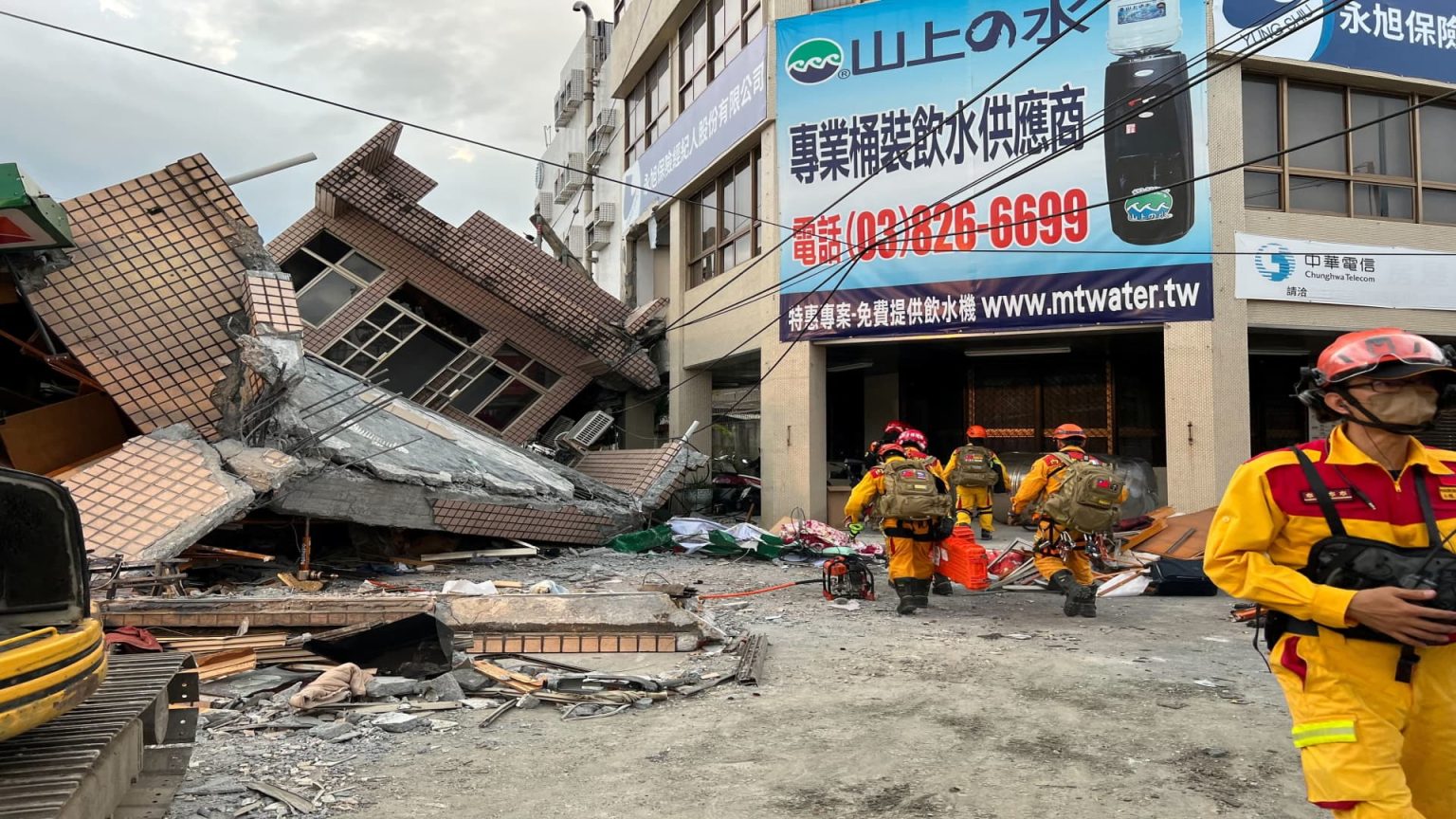A powerful earthquake struck Taiwan early Wednesday, causing buildings to collapse in a southern city and generating a tsunami that reached southern Japanese islands. The five-story building in Hualien sustained heavy damage, with its first floor collapsing and the rest leaning at a 45-degree angle. Tiles fell from buildings in Taipei, the capital, and train and subway services were temporarily suspended across the island. Despite the initial chaos, normalcy quickly returned to Taipei, with children going to school and the morning commute proceeding as usual.
The Japan Meteorological Agency detected a tsunami wave of 30 centimeters on Yonaguni island about 15 minutes after the quake, with likely impacts on the coasts of Miyako and Yaeyama islands as well. Japan’s Self Defense Force mobilized aircraft to survey the tsunami’s effects in the Okinawa region and prepared shelters for potential evacuees. Taiwan’s earthquake monitoring agency reported a magnitude of 7.2, while the U.S. Geological Survey estimated it at 7.4. The quake struck at 7:58 a.m. about 18 kilometers south-southwest of Hualien, with a depth of about 35 kilometers.
Wu Chien-fu, head of Taiwan’s earthquake monitoring bureau, noted that the quake’s effects were felt as far away as Kinmen, a Taiwanese-controlled island near China. Multiple aftershocks were experienced in Taipei following the initial quake, with one reaching a magnitude of 6.5. Despite the seismic activity, the Pacific Tsunami Warning Center clarified that there was no threat of a tsunami to Hawaii or the U.S. Pacific territory of Guam. The earthquake was believed to be the largest in Taiwan since a devastating temblor in 1999, highlighting the country’s position along the volatile Pacific “Ring of Fire,” where seismic activities are common.
The earthquake in Taiwan serves as a reminder of the region’s vulnerability to natural disasters due to its location along the Pacific Ring of Fire. The swift response by authorities in both Taiwan and Japan, including the mobilization of resources to assess and mitigate the impact of the tsunami, demonstrates the importance of preparedness and cooperation in the face of such events. While the immediate aftermath of the quake was marked by chaos and structural damage, the resilience of the affected communities was evident as life quickly returned to normal in Taipei. The earthquake also highlighted the need for continued monitoring and research to better understand and mitigate the risks posed by seismic activity in the region.
As Taiwan and Japan continue to recover from the earthquake, attention will likely shift towards assessing the extent of the damage and initiating reconstruction efforts. The collaboration between the two countries in response to the crisis underscores the importance of regional cooperation in addressing common challenges, such as natural disasters. With both Taiwan and Japan situated in seismically active areas, ensuring the resilience of infrastructure and communities against future earthquakes will be crucial in mitigating the impact of such events. The earthquake serves as a stark reminder of the unpredictable nature of natural disasters and the importance of being prepared to respond effectively when they occur.


